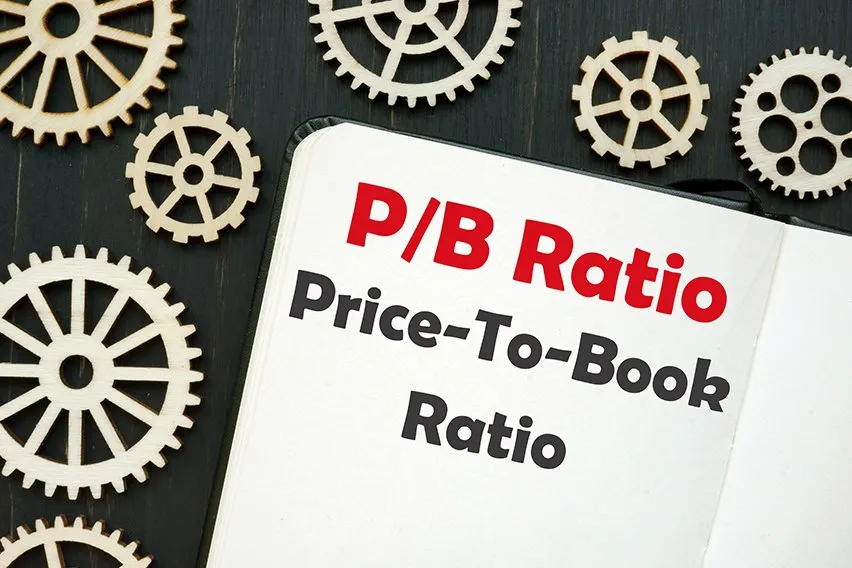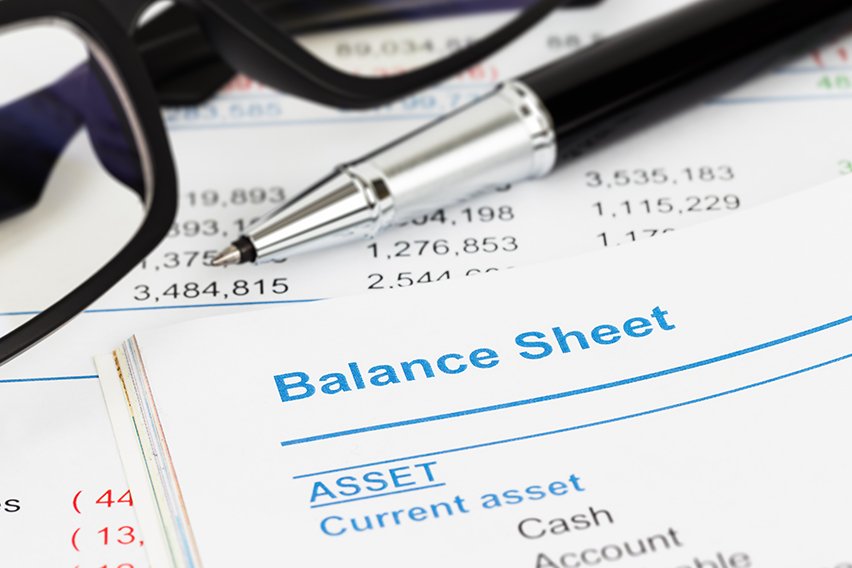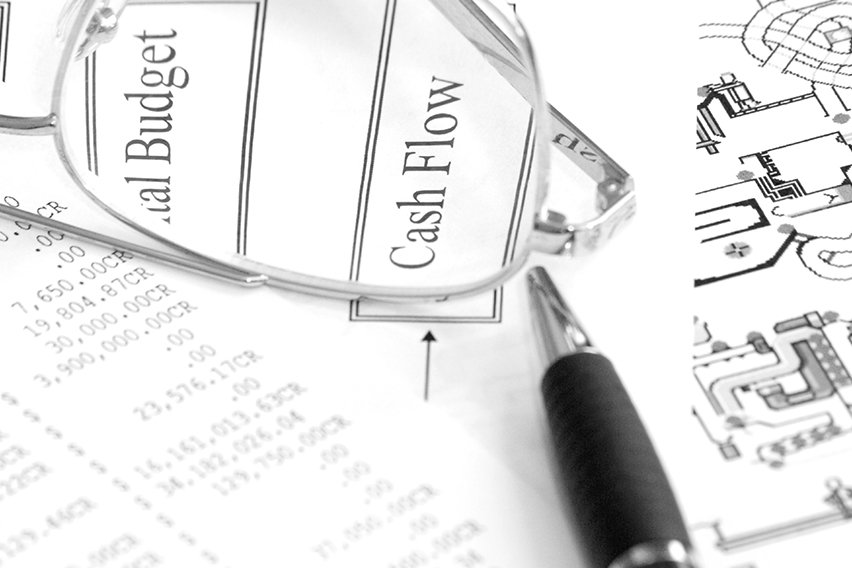What is the Price to Book Ratio (P/B Ratio)?

A price to book ratio, also known as P/B Ratio, is a ratio analysis of the current market value of a company divided by its book value. It’s used to determine if a stock is overvalued or undervalued. The lower the number, the better it means that your investment will have more room for growth in future years. If it’s higher than 1, then you should consider selling and finding another stock with less risk involved. Let us help you make sense of this important metric!
Read the rest of this article to learn everything you need to know about P/B ratios, what they mean, why they’re important and how you can use them.
Here’s What We’ll Cover:
What Does Price to Book Ratio Mean?
What Is a Good Price to Book Ratio?
How is the Price to Book Ratio Used?
What Does a Negative Price to Book Ratio Mean?
What are some Other Ways to Use Price to Book Ratio?
What Does Price to Book Ratio Mean?
Price to book ratio is calculated by dividing the current price per share by the company’s book value per share. For example, if a company’s stock price is $35 and its book value per share is also $35, then that company has a book value score of 1 [1 = 35 / 35]. This means that it has been trading at its book value per share for some time now.
The price to book ratio is used by investors as a way of determining if a company’s current stock price is too expensive. It helps them know when it might be a good idea to sell the stock and buy more shares outstanding in another business. A low valuation ratio means that your investment will have more room for growth. It’s ideal for companies that are looking to attract more investors at a small cost.

What Is a Good Price to Book Ratio?
The P/B ratio is one of many ways that you can tell if your investment might be undervalued or overvalued. There are many other ways to determine the valuation of a firm, but the P/B ratio provides you with an easy way of comparing them side by side.
Generally, investors look for P/B ratios under 1. This means that if a stock is trading at $10, the book would need to be greater than $10. For example, 10/12 equals .83.
How is the Price to Book Ratio Used?
The price-to-book ratio is used by investors as one method for determining whether or not it’s time to sell off their investments. Most investors look for a company with a price to book value of less than 1. This means that if the market price is $10, the book would need to be greater than $10 in order for it to remain a good investment. That being said, this number varies from investor to investor and stock to stock.
How is Book Value Calculated?
The book value is calculated by taking the total assets and subtracting any liabilities and intangible assets. This gives you a rough idea of how much you might receive if the company decides to liquidate. It’s important to note that this number cannot be found on your taxes. It can help you determine whether or not it’s worth investing in a company. It won’t tell you how much money you will or won’t make in the future.
Book value per share is calculated by dividing the book value of the company by the number of outstanding shares. This tells you how much it would cost you to purchase 100% of all the assets of a particular stock.
What Does a Negative Price to Book Ratio Mean?
A negative book value means that a company has more total liabilities than assets. It owes more in numerical terms, but it’s not automatically bad news for investors. There are many factors to consider when assessing whether this may be good, bad or indifferent regarding your investment potential with them. This also isn’t necessarily a good indicator of how strong their balance sheet actually is.
Here are some questions to consider when assessing a negative price to book ratio:
- How much did they invest into research and development?
- What percentage of revenue came out last year if we’re talking about publicly traded companies
- Have any recent projects failed leaving the company with unexpected debt
- What is the current industry sentiment towards this company’s specific field of business?
- Shares trading at less than book value are often considered to be undervalued stock, but that does not mean they will rise in the future. These stocks tend to be more volatile than others. This is because investors are trying to determine how valuable they really are.

Why Do Banks Use P/B Ratios?
Banks use price-to-book ratios because they’re trying to determine what the market value of a company is. The book value will help them know how much it would cost them to buy 100% of its shares and assets. If the bank’s total market capitalization is greater than the current P/B ratio, then it means that their purchase will not help them grow. The bank may want to wait until the price falls below the book value before making a large scale investment in another company.
P/B ratio can also be used as a “test market.” If the P/B ratio of Company A is greater than Company B, this might indicate that it has more potential to grow and give the investor a better return on their investment. Investing in Company A might be a better choice than Company B for this reason, even though Company B may have all the right qualities otherwise.
What are some Other Ways to Use Price to Book Ratio?
There are several investor tools that use price-to-book ratios within their calculations. These include price-to-cash flow and price-to-earnings ratios. Price to cash flow compares the current share price of a company with its yearly income. This is found on the cash flow statement. The result will tell you how much money you can expect to make from this investment in a year, given a set amount of time.
Price-to-earnings also compares the current share price with yearly earnings shares. There is a twist with this one. It will compare those numbers with previous years to determine how quickly a company is growing.
Key Takeaways
There are several key conclusions that can be drawn from this article. P/B ratios do not always give the complete picture. They do offer a good perspective though. The first is that price-to-book ratios are often used to value companies at a specific point in time. It’s not an indicator of how much you will make or lose if you invest. This makes it difficult to predict what the future holds for investors who buy stocks based on P/B ratios. However, you can also use other tools like price-to-cash flow and price-to-earnings ratios to help you make more informed investing decisions.
Did you enjoy reading this guide? Head over to our resource hub for more great content!
RELATED ARTICLES

 What Is Book Value? Definition & Importance
What Is Book Value? Definition & Importance How to Make a Balance Sheet: 5 Steps for Beginners
How to Make a Balance Sheet: 5 Steps for Beginners Debt Vs Equity: What’s the Difference?
Debt Vs Equity: What’s the Difference? Cash Flow Statement Indirect Method: What It Is & How to Prepare?
Cash Flow Statement Indirect Method: What It Is & How to Prepare? Hedge Accounting: Definition & Guide
Hedge Accounting: Definition & Guide Accounts Receivable Management: 6 Best Improving Tips
Accounts Receivable Management: 6 Best Improving Tips